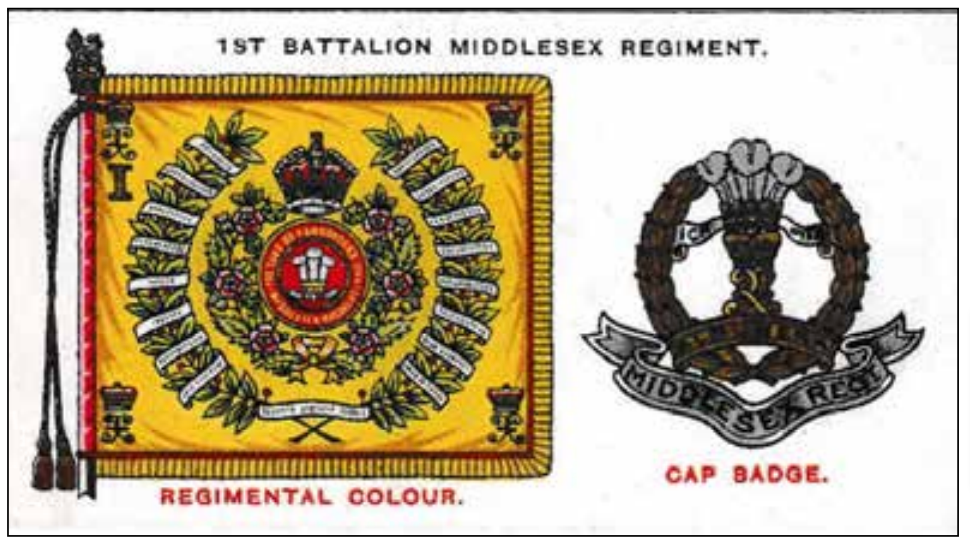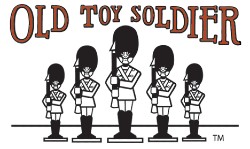When Britains started producing toy soldiers about 130 or more years ago, London was administratively, by and large, composed of four quarter sectors being all or parts of English counties, Middlesex to the NW, Surrey to the SW, Kent to the SE and Essex to the NE. In fact, Middlesex as a county had its County Hall in Parliament Square, (now The Supreme Court), just opposite the Houses of Parliament. All the Central Government Departments and Parliament were in Middlesex. In due course of the 4 counties Middlesex alone became effectively totally part of London as London was reorganised and expanded to its interim and present boundaries. So, although Britains had produced the 7th Royal Fusiliers (City of London Regt) set 7 earlier than set 76, as a London regiment, this set 7 was just ‘based’ on the ‘Square Mile’, the Financial District. Thus, the Middlesex Regiment probably came to be seen as the senior and prominent Regiment of the London area, and so also by Britains.
The London County Council (LCC) was established in I889 and incorporated the most populous sector of Middlesex, its southeast corner, so about 1/3 then became part of the LCC. Until 1965 when the Greater London Council (GLC) was established the other 2/3 of Middlesex was administered still from Parliament Square. After 1965 the GLC then administered all of Middlesex and as an English County it became history. But the County Regiment continued as a significant part of Britains toy soldier production, from its inception in 1897. Both Kent and Surrey were roughly half rural counties as well as urban, as was Essex. Kent and Surrey were home to 2 county regiments, each both representing the two halves, the urban and rural natures of their domain. Surrey had the East Surrey Regt and the Royal West Surrey Regt. Kent had the East Kent Regt and the Royal West Kent Regt. (See Ch 3, P3 2 and P3 3 for these four regiments colours laid up in Canterbury and Guildford Cathedrals). Essex was the poor relation of the London constituent counties with a single regiment, even though it was similar to Kent and Surrey with both urban and rural portions. While Surrey and Kent had a county regiment produced by Britains in the 1890s Essex had to wait for the Famous Regiments sets of the late 1930s before residents there could obtain their own county toy soldiers.
So, Middlesex was effectively total urban with a single regiment and deemed seemingly to be, by and large, the senior London regiment, and Britains gave much prominence to it in a fair number of diverse sets over the decades as will be seen in this article. Britains first London factory at Lambton Rd was also in Middlesex. A comment in passing, Britains for some unknown reason initially produced the East Kent Regt set 16 and the Royal West Surrey Regt in set 29 two or three years ahead of the Middlesex Regt set 76.

Around 1900, Middlesex accounted for approximately 25% of the greater London population, about 2-3 million inhabitants. This was a rich source of potential buyers of toy soldiers in general and the for the Middlesex Regiment in particular. It is no surprise that Britains issued a variety of sets including this Regiment over the years. Nearly all the Middlesex contingents comprised just those marching with an officer, (see Joe Wallis’s books for the dozen or so sets in which the Middlesex Regiment were included). Other Regiments represented at the same time, like the Gordon Highlanders or the Scots Guards, were produced in a variety of stances and action positions. The Middlesex Regiment was not so favoured.
Britains first figures in set 76 in 1897 were part of the overall initial Britains continuing improvement philosophy, with this new set sporting moveable arms as illustrated in James Opie’s Great Book of Britains (GBB) picture 65. These moveable armed figures were replacing the first marching infantry fixed arm figures in other sets like those for set 36 The Sussex Regiment as shown in picture 26 of James Opie’s GBB. These first issue Middlesex figures did not have a long run since the next generation of the infantry marching figures were produced about 1905, still oval base but with a vastly improved stature and equipment as can be seen in P1 (this is a third version). Set 76 was alongside sets 75 and 74 with the improved body and equipment produced at this time. Again, not a long run of production since the next version came in 1908 as shown in P1 when square bases replaced oval. The improved figure with its half-boots also did not last long, very quickly being exchanged in the Middlesex Regiment set for the universal full trousered, standard marching figure, without equipment, for rank and file in about 1912, as seen in the following pictures. The half-booted, box packed marching figure would continue though for another 30 years or more as a basis for the Fusiliers and Royal Marines. The officer in set 76 however did not change in the 1912 upgrade and continue here and across the board half-booted till the 1930s.
In passing, it would seem Britains confirmed their focus on Middlesex as a prominent county for which to make toy soldiers since, 13 sets after the infantry regiment set 76, they produced the Middlesex Yeomanry set 89, P2, regaled in their fine dark green hussar type uniforms, the only time in the lead era a named yeomanry regiment was produced, and splendidly, in full dress. In fact, the Whisstock label confirms the Britains take on the standing of Middlesex with the box label including the words 1st County of London. At about the same time as the box packed figures of P1 got their square bases Fred Whisstock started producing his very attractive individual labels for lots of Britains sets. P3 shows such a label for the Middlesex Regiment set 76, (and also the Middlesex Yeomanry P2).
As covered, in about 1912 the box packed figure for guards and certain infantry were replaced by a full trousered figure without any box pack and other Slade-Wallace equipment. This figure would continue to be the ordinary ranks figure for the rest of the life of lead production of the Middlesex Regiment. The officer however would continue with his half-boots until the mid 1930s as reported earlier. P4 shows a late 1930s set of the Middlesex Regiment with the simple unexciting bog standard body as in large numbers of Britains marching infantry sets.
From the late 1930s to the end of Britains production of lead soldiers the only change to the figures as shown in P4 was the swap from black moustaches to red lips as shown in the post war set in P5. Rifles on movable rifle arms though were slightly modified post war.
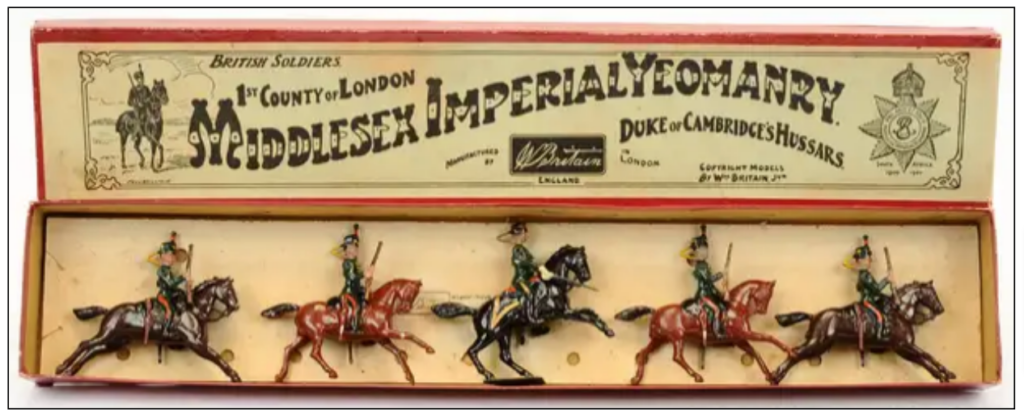

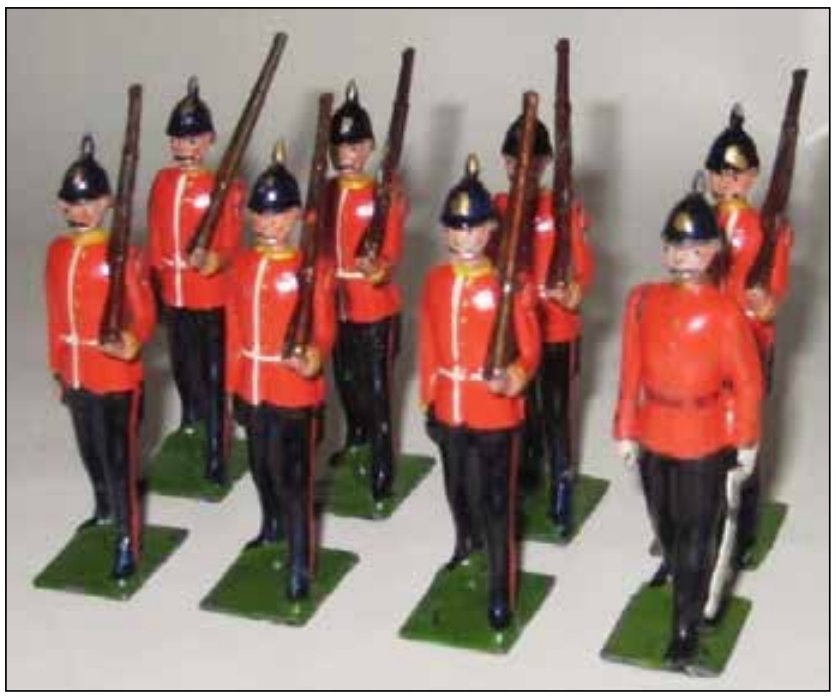
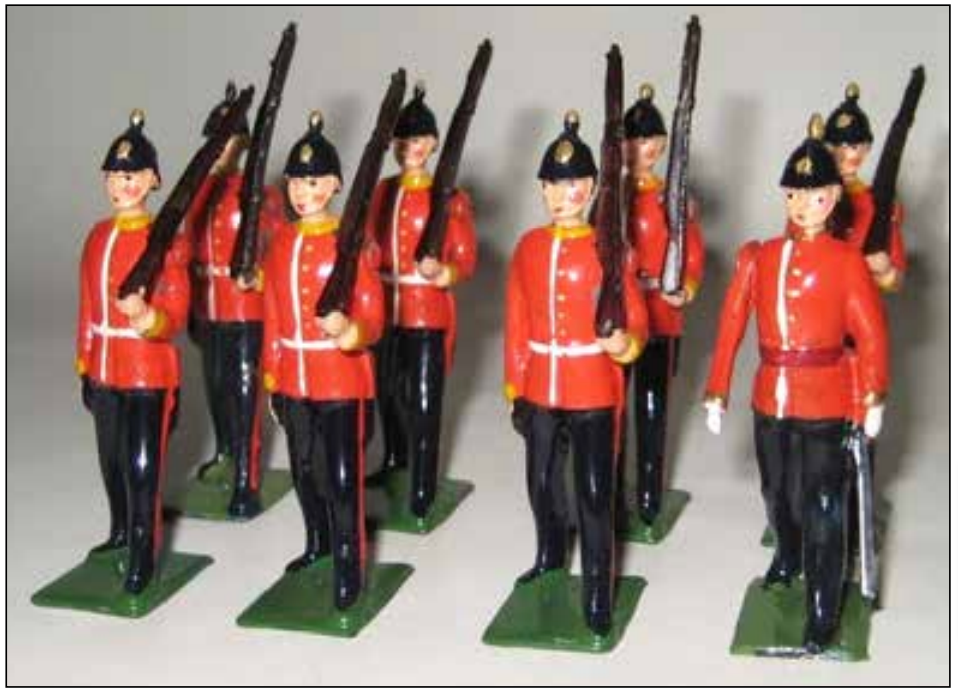
In the early 1930s, Britains with a bit of lateral thinking and continuing initiative to keep sales up with alternative set components and strategies but using the same figures and regiments time and time again came up with their Parade series boxes, single width boxes one year, doubled width the next year.
Some coverage below echoes some of the article in Soldiers on Parade OTS Vol 47 No 1 but is included here to obviate cross referrals.
P6 shows The Middlesex Regiment in its single width box set 439 in the Parade series. Contents here are 8 men and the officer, he still half-booted, in a way this reflects the platoon approach of the British Army in earlier times which had ranks of 4. These Parade sets of 9 or 13 figures allowed 2 or 3 ranks and the officer in front. A much tidier group than the set of 7 figures and an officer of lots of Britains other boxes. Such an approach in the Parade series though depended on your wish or otherwise to take your troops out of their clever Parade boxes. The label looks like Fred Whisstock’s hand but is not signed by him. These Parade boxes came out very soon after his last signed label for set 400. Maybe they had been done just prior to his retirement.
There were 2 double sized boxes for the Middlesex Regiment, a) one x 2 of the 9 figured box, and b) one for x 2 the 13 figured box, sets 481 and 490 (see P13 in the OTS referred article), the set titles in the catalogue were exactly the same for these 2 boxes ‘Middlesex Regiment with buglers, drummers and mounted officers’. James Opie’s GBB reports set 490 to be 16 ordinary ranks, 4 buglers, 4 drummers and 2 mounted officers, note the ’s’.
Set 481 has 18 figures and set 490 26 figures even though there are mounted officers included in both titles. There have been various reports trying to confirm the contents of these 2 boxes. I have not seen them in the flesh so to speak either original set and/or box, with or without contents, but some pictures have appeared on one or two occasions in the last 10 year or so purporting to show contents of set 490..
In 2004 Bonhams had lot 26 in an auction sale as shown in P7 described as Parade series set 490. However the mounted officer does not have the green base between the rear legs and neither is it the spindly legged horse. Also drummers are full trousered whereas at the time of their short production run Parade series (and other) sets were still using half-booted drummers.
It is surmised that this group of the Middlesex Regiment comes from set 1461, see P12 below. P7 is short of one man, two buglers, the drum major, the colour bearer and a foot officer if set These latter 3 could easily get misplaced in another box since none would sport any yellow facings.
After the three Parade series boxes the next significant box with the Middlesex Regiment figures included is set 1267, P8, brought out in the mid 1930s and the twelve Middlesex Regiment figures from the set are shown in P9. The one figure of note is the officer carrying the colour of the regiment over his shoulder for the first time for the Middlesex Regiment, similar to that which was included in set 255 The Green Howards. Both Middlesex officers have no yellow facing colour.
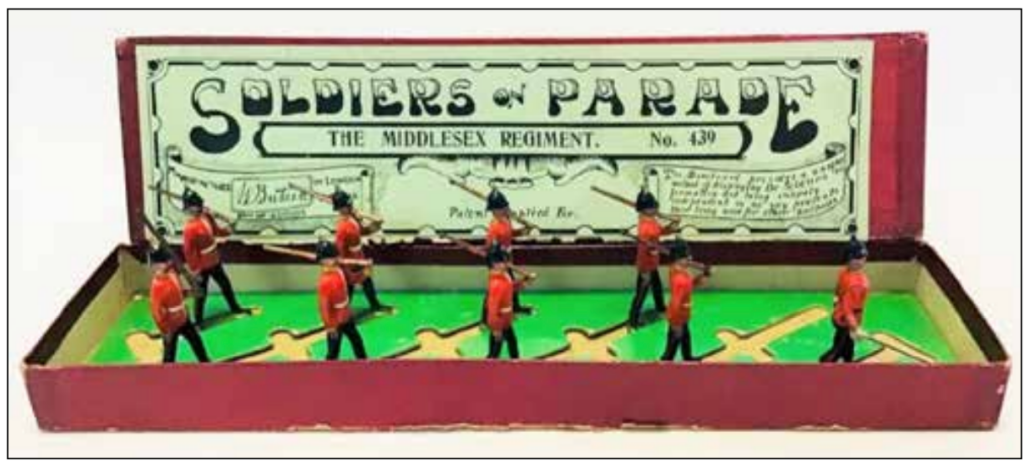
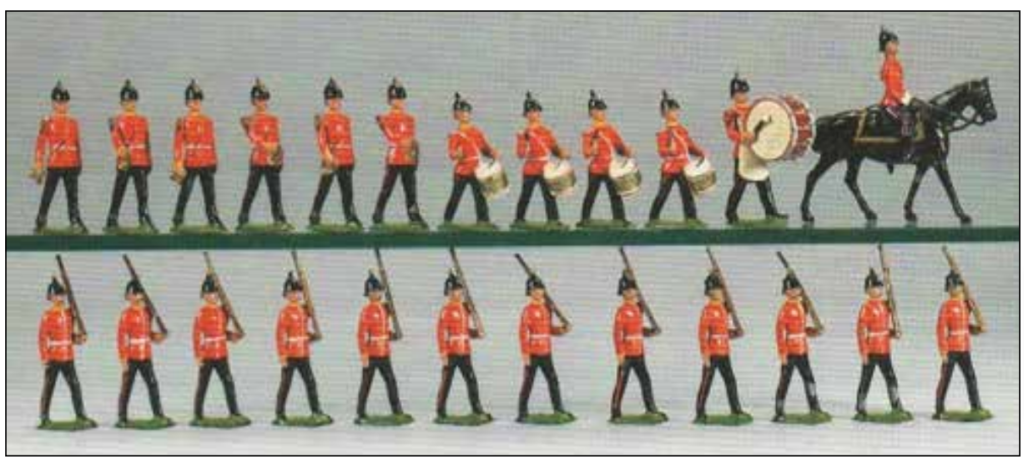
P8 shows the first version of set 1267 with Middlesex Regiment constituents as in P9. When a later version of set 1267 was produced in the late 1930s, incorporating Infantry in Khaki, the Middlesex Regiment contingent had been reduced to just nine and the colour bearer had been deleted (see picture P7 8e in my book ‘Britains and other Interesting Toy Soldiers’, 2024).
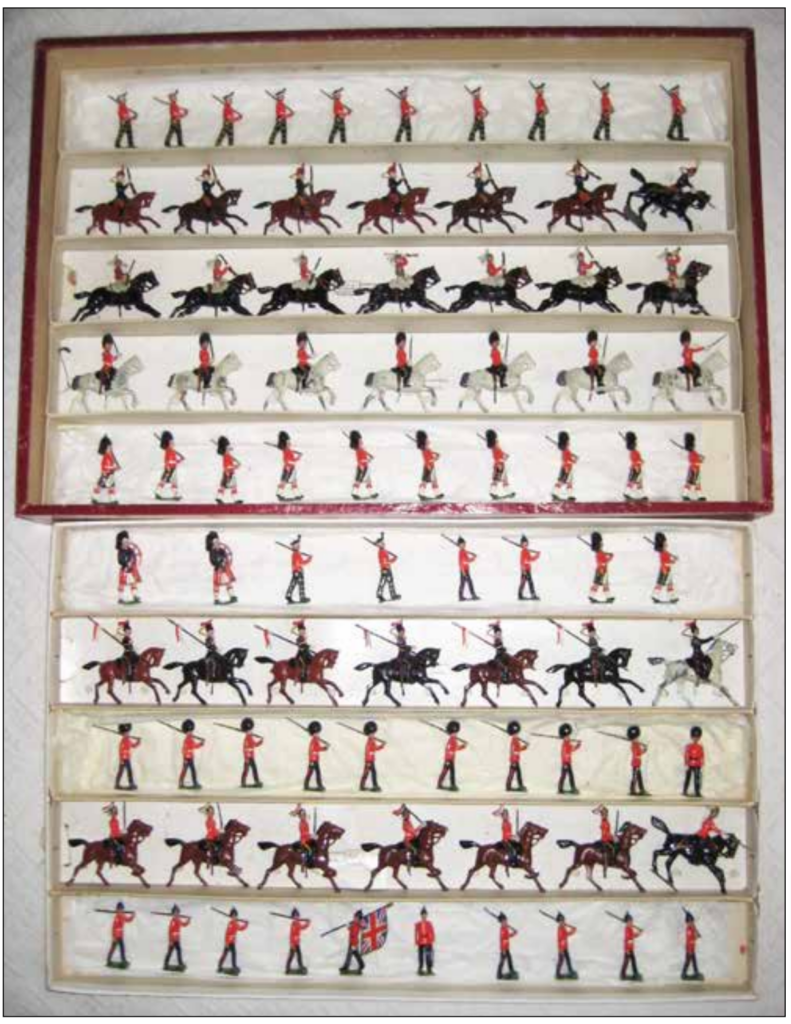
line of the tray insert, two in the top line of the tray
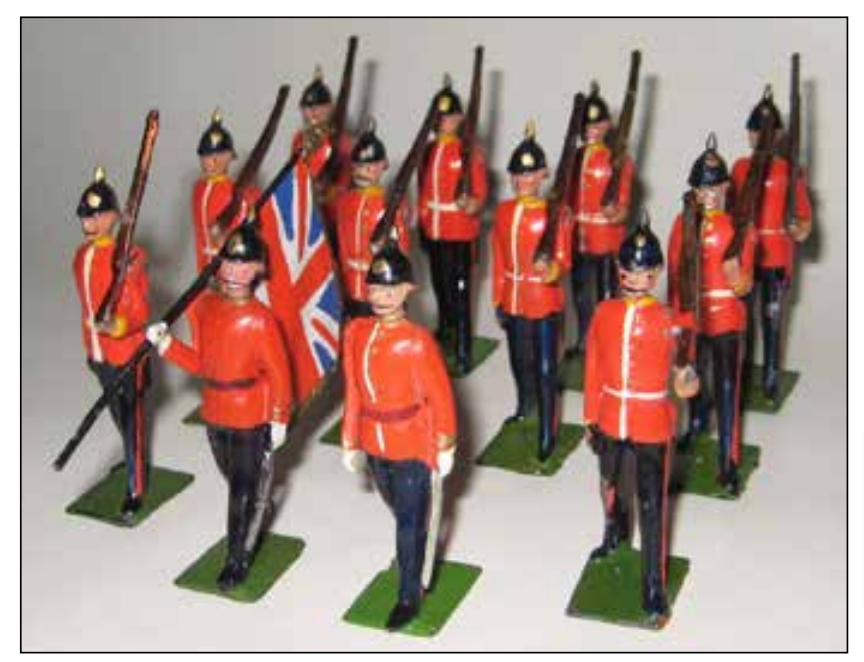
Not in the catalogue but brought out in 1936 were two numbered sets with notable contingents of the Middlesex Regiment, sets 1458 and 1461. Two such sets were sold by Vectis in 2010 and are pictured in P10 and P12. They were reported as being bought by the seller as special orders in 1938 from Gamages. Set 1458 is the Band of the Middlesex Regiment and as can be seen in P10 has a conventional Britains box label. Set 1461’s auction lot description reports an orange Gamages label ‘Model Toy Soldiers’.
Both sets 1458 and 1461 are flagged as unlisted in the literature. Set 1458 is reasonably clear as to contents with its 18 piece band, both as seen in P10 but also as seen in some examples as have appeared elsewhere from time to time. My set of the Band of the Middlesex Regiment, P11, is somewhat playworn but is quite reasonable none the less and as a rarity is pretty acceptable. Set 1461, P12, however has some enigmas attached. Certainly, the clear evidence in P12 shows what the set’s contents were, it also shows the likelihood that P7 probably came from that set rather than as tagged in 2004 from set 490.
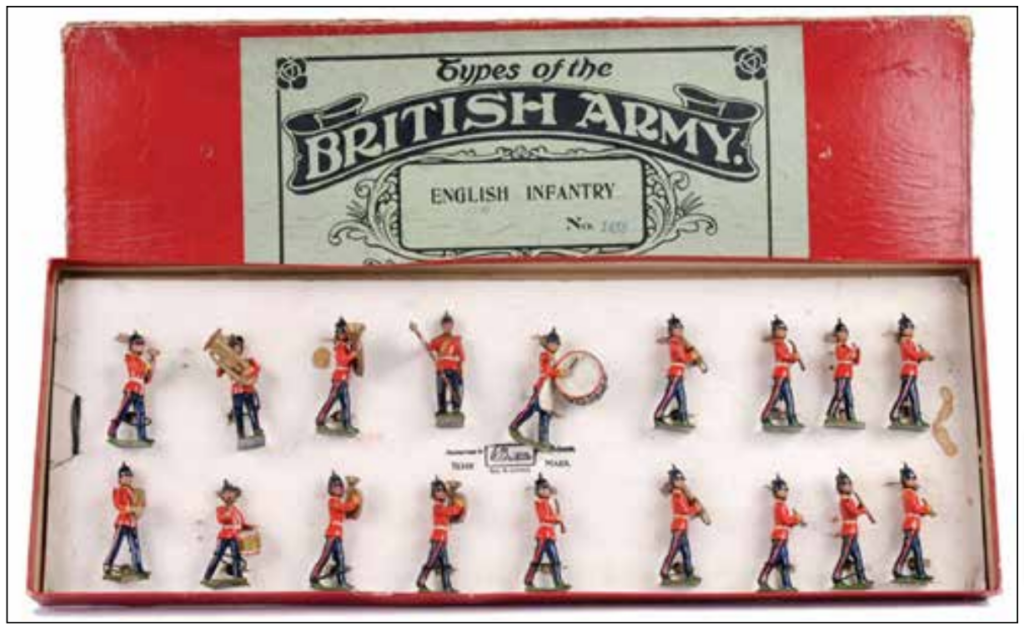
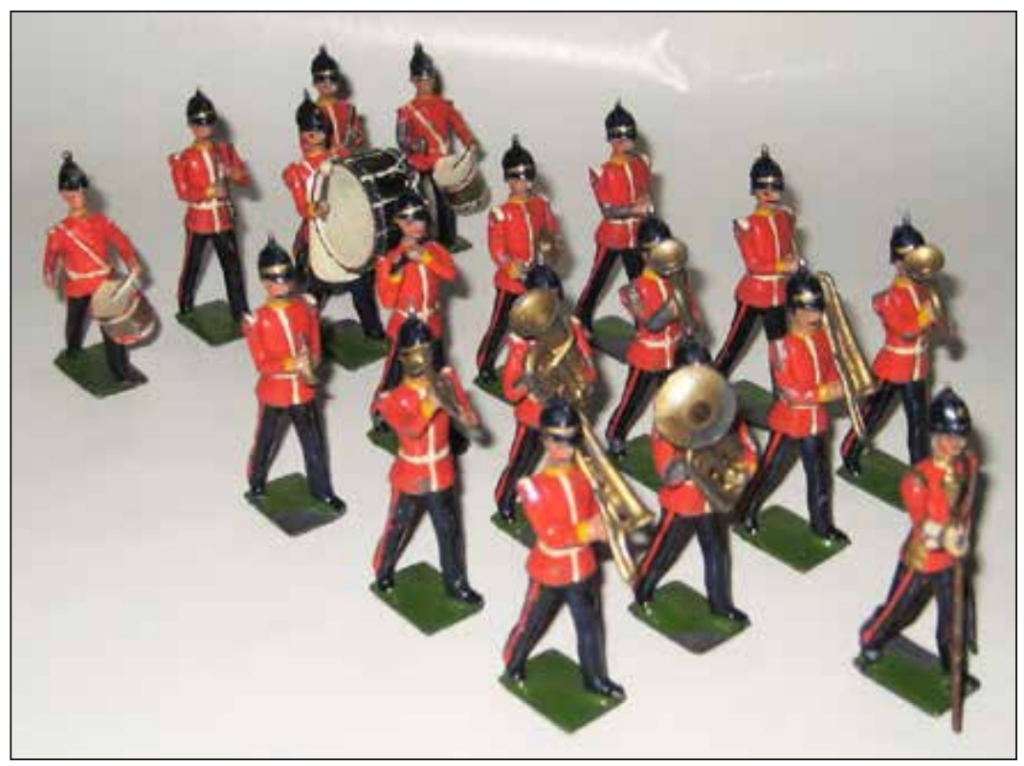
The enigma arises from James Opie’s GBB wherein he reports the contents of set 1461 to be:
– 21st Lancers
– 5th Dragoon Guards
– Royal Sussex Regiments
– Scots Guards colour and pioneers
– Coldstream Guards 31 pieces
James goes on to say ‘Possibly they were made exclusively for Gamages, although – only 1461 appeared in the Gamages 1938 Christmas catalogue see picture 545.’ And therein lies another part of the enigma, picture 545 shows a Britains 2 layer set with 52 figures, no set number is ascribed and the contents do not seem to show either 21st Lancers or the Scots Guards Pioneers.
Joe Wallis in his first version Armies of the World 1925 – 1941 also reports set 1461 with its 31 pieces having the same 5 constituent regiments, as James reports above. Both probably used the same reference source.
The Middlesex Regiment contingent in set 1461 is a very attractive group and would enhance any ceremonial display on the library floor or the dining room table. Its 30 strong contingent would look fine led by a mounted officer, then the 14 piece drums and bugles, followed by the two officers marching, one with a colour and then 13 ordinary ranks. As I say P8 would look very similar when set out but unfortunately missing the drum major and the 2 foot officers, two buglers and a man. Bearing in mind that the first 3 figures would not have any yellow facings, there is every chance they got misboxed when last put away.
So Britains paid due respect to this prominent London regiment, also recognising maybe that it was home territory for Britains.
Addendum 1
Britains kept faith with this named County Regiment, their home county regiment, even after the end of lead production, but intermittently. Some plastic issues in the Eyes Right range were marketed in parallel with the last lead Middlesex Regiment set, and very much later the regiment was reissued in the die-cast metal range.
While a shortened set 76 came out in the early 1960s as set 9136 in its cellophane fronted box it only lasted till 1963, and at that time effectively only plastic Eyes Right Middlesex Regiment individual figures initially and then some sets were available. These Eyes Right issues did not endure a long production run, with the very last being withdrawn in 1968.
There was then a twenty-year hiatus on any figures depicting the Middlesex Regiment until the New Metal range of four sets came out in 1989, numbered 8700 – 8703, with Drums and Bugles and a Colour Party in both medium and small composite groups. Again, they did not endure long, seemingly only two years.
For interest in passing P13 shows the figures from set 8700, two colour bearers and two escorts. Reasonable depiction but do not coordinate all that well with any of the issues of the Middlesex Regiment from the lead era as covered above.
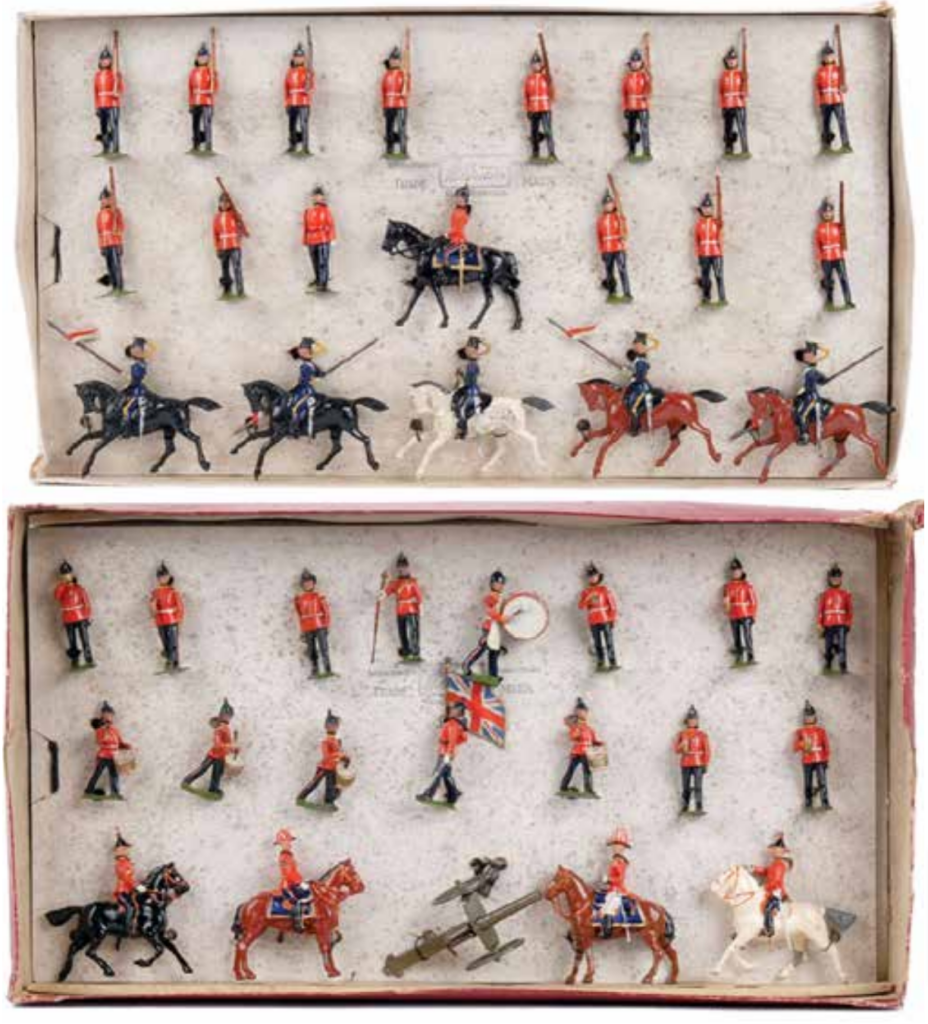
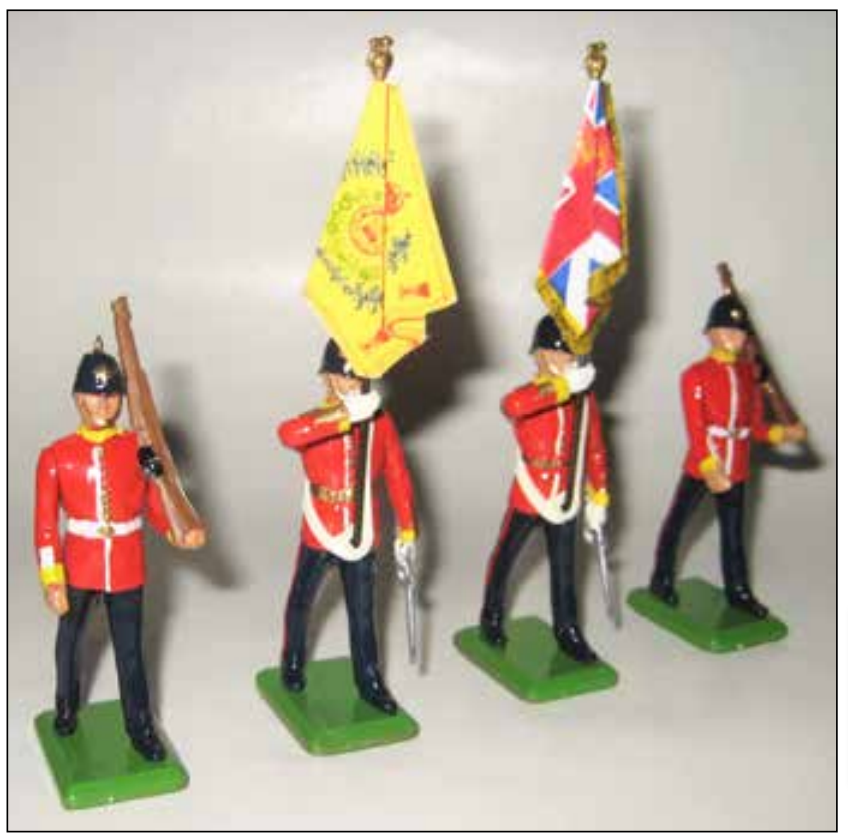
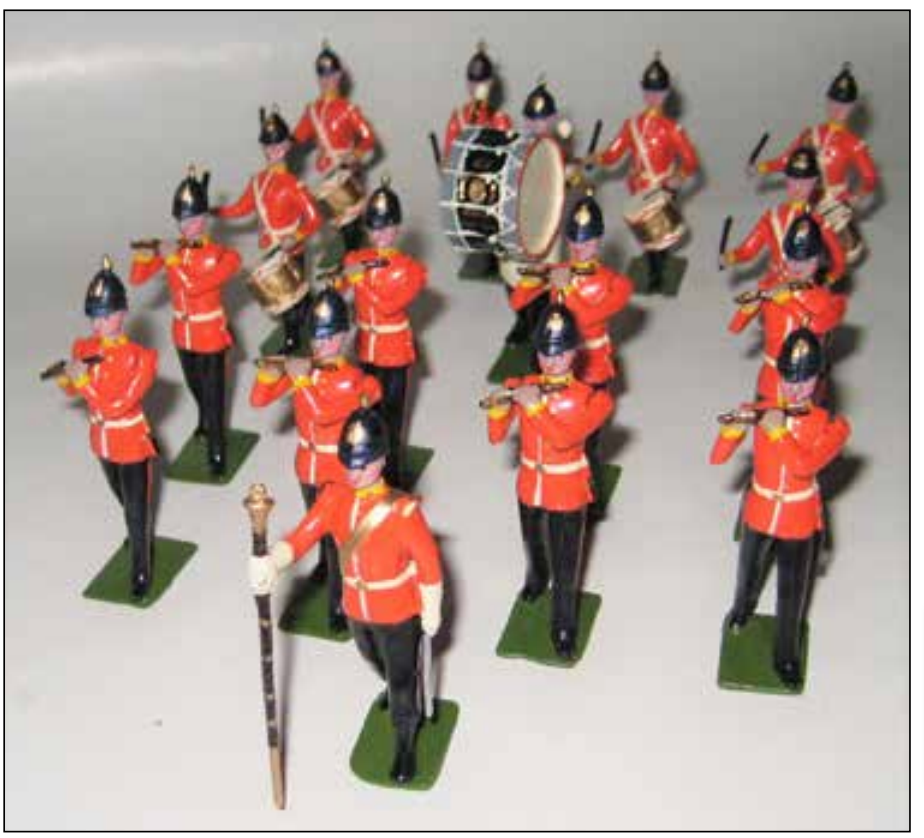
Before I got into looking into various aspects of Britains in general and, as covered in this section, the Middlesex Regiment in particular, my own sequence for the Regiment following the initial acquiring of set 76 in its fine ROAN box, and during the one or two decades later before the millenium, I was into the full swing of making bands and colour parties, primarily British regiments for around 1900. In those 1970 and 1980 decades I painted some Britains stripped down castings to be the Drums and Fifes of the Middlesex Regiment P14, which fit reasonably well with the band above and my original marching contingents.
Addendum 2
The Middlesex Regiment as a separate County regiment ceased to exist per se in 1966 with another British Army reorganisation. It together with regiments from Kent, Surrey and Sussex were amalgamated into the new Queens Regiment. Thus separate regimental colours were no longer the main regimental colours and were laid up in due course. A number of Middlesex Regiment colours were laid up in St Pauls Cathedral in central London, P15. St Pauls is Wren’s outstanding masterpiece built after the great fire of London in the 1600s. In a way a fine recognition with the magnificent location of the ethos of the regiment with all its battle honours, though in army terms the Middlesex Regiment was a fairly standard infantry regiment but what an honour to be laid up and remembered in such a venerated setting.
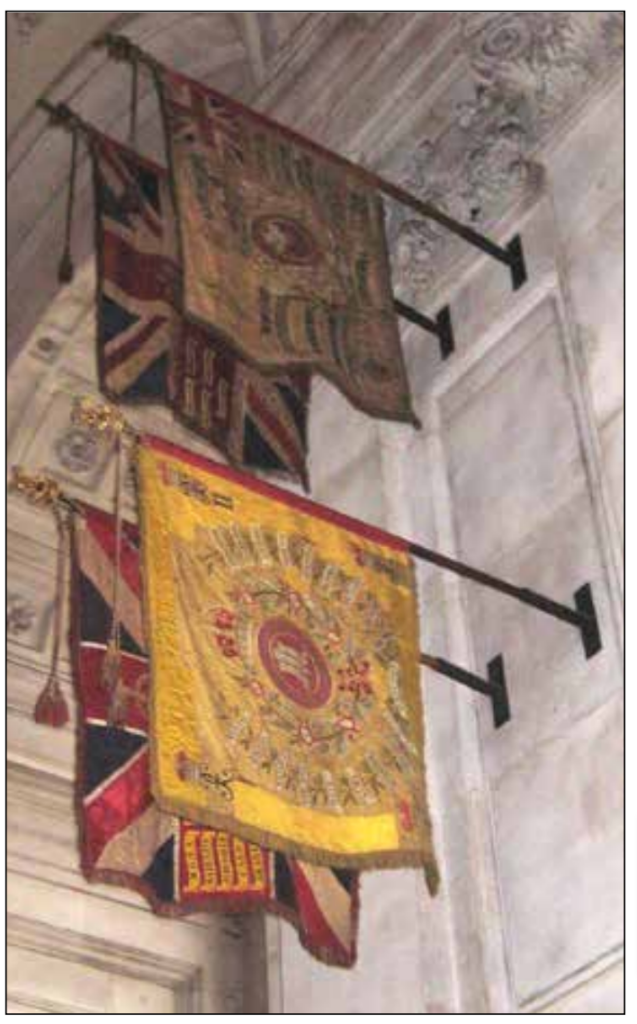
in St Pauls Cathedral
P15 shows
a) Top set, colours of the 2nd Bn The Middlesex Regiment (DCO) originally colours presented to the 77th of Foot (East Middlesex); presented in 1876 and transferred on change of title to the 2nd Bn The Duke of Cambridge’s Own (Middlesex Regiment) in 1903 and finally laid up in 1925.
b) The colours beneath were the second set of colours presented in 1925 to the 2nd Battalion and laid up in 1953 when the 2nd Battalion was amalgamated with 1st Battalion The Middlesex Regiment (DCO). At the time of my photography for P15 the colours of the amalgamated regiment (1953 – 66) as laid up in 1975 had not been remounted following building work inside St Pauls. Although the Middlesex Regiment was incorporated into the new Queens Regiment the original Middlesex colours were carried until life expired in 1975.
In the absence of the 1st Battalion colours in St Pauls, we can refer to the cigarette card of the Regimental Colour as produced in the 1930s card set of Regimental Standards and Cap Badges by John Player (P16). The rear of the P16 card reads:
1st Bn. Middlesex Regiment.
The facings of the regiment are lemon yellow, and the Regimental Colour is of that shade. In each corner is the late Duke of Cambridge’s cypher and coronet; the regiment is known as the ‘Duke of Cambridge’s Own’. Possibly the most famous Battle Honour won by the Middlesex is that of Albuhera, where they were almost wiped out. Colonel Inglis, commanding, cheered them on with the words “Die hard, my men, die hard.” hence their nickname of the ‘ Die Hards.’ The Regiment was originally four battalions strong.
